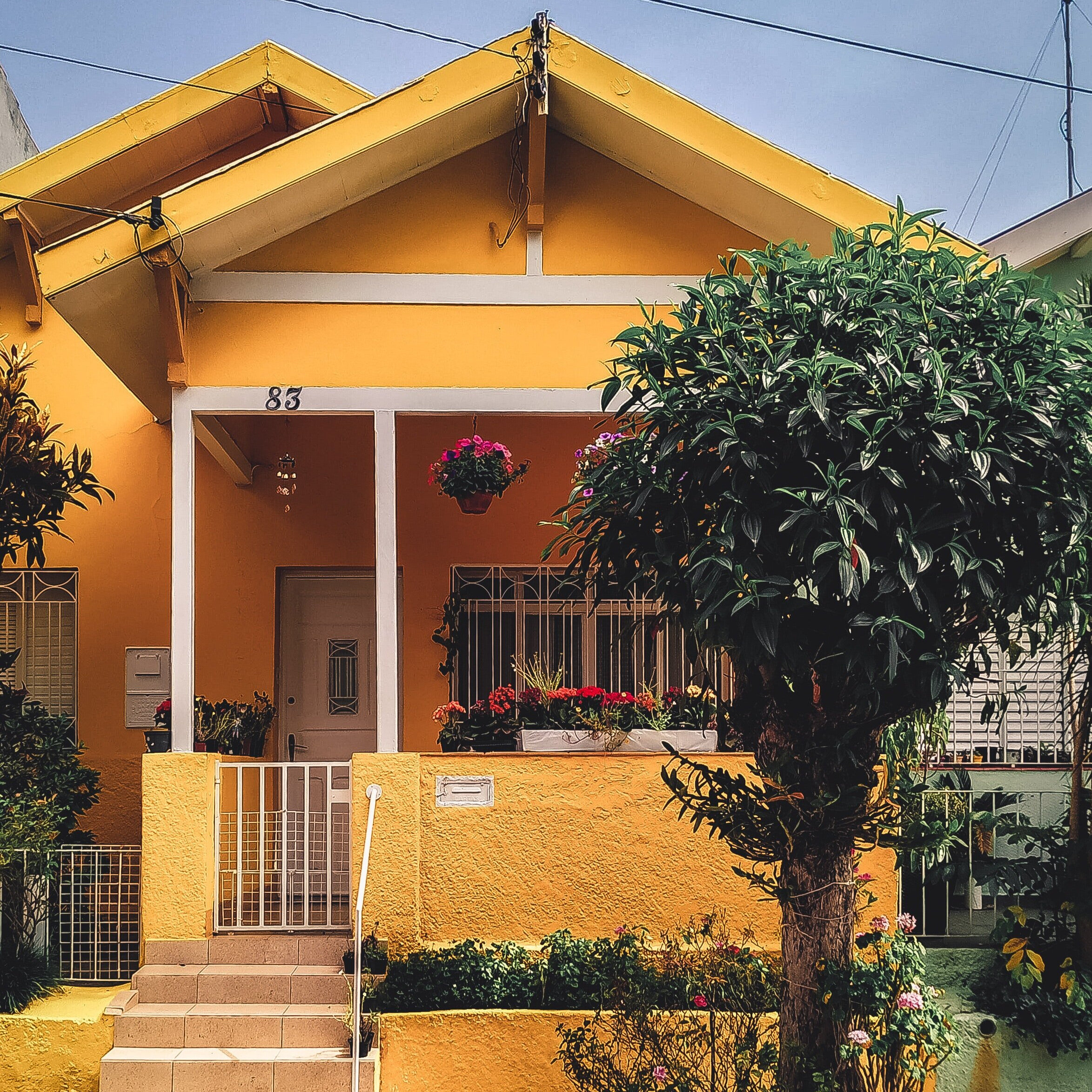What Latin Hospitality Taught Me About the Gospel
Mid-stride, I noticed his home. It was out of place. No wait, the porch was out of place. This summer I lived at a busy intersection dividing Chicago’s Wicker and Humboldt Park neighborhoods. Directly on my running route through Wicker, I discovered an older gentleman who consistently sat on the patio extending beyond the tiny porch of his home. Even when his chair was vacant, the front door hung open and a water glass sat at the table waiting for his return or the arrival of a friend. It is not that Wicker Park lacks beautiful porches, it is that this gentleman’s porch is a flavor that one would typically connect to Humboldt Park—spilling into the street, extending a vibrant welcome punctuated by unconventional paint selection, flowers, statues and flags. This porch speaks of warm, Latin hospitality.
In a technology-driven era with decreasing face to face connection, the western church has recently emphasized the concept of biblical hospitality. A brief online search leads to articles and blogposts, lamenting the loss of in-home hosting and after church lunches around the kitchen table. In 2018, author and speaker Rosaria Butterfield furthered the discussion with her book, The Gospel Comes with a House Key: Practicing Radically Ordinary Hospitality in Our Post-Christian World. Butterfield calls the church to a lifestyle of hospitality as a principle means of welcoming the lost into the gospel of Christ. House church movements, such as Legacy Christian Fellowship in Chicago, are an increasing church plant model in urban areas, making church accessible to those who may not set foot in a church building. As the church seeks to live out biblical hospitality for the growth of the Kingdom of God, a valuable lesson can be learned from the front porches of the Latino community.
Urban planner and community activist, James Rojas, is a pioneer and leading thinker in “Latino urbanism” and Latin placemaking in America’s neighborhoods. Immigrating to neighborhoods planned, zoned, and built for the ambitions and lifestyle of the American working and middle-class, Rojas explains that Latinos bring into America’s neighborhoods their own view of land, people, and place.[1] Rojas calls this the “Latino vernacular.” This vernacular is not only a synthesis of cultural styles from a variety of home countries, but a visual expression of the very values and experiences of both the individual and the immigrant community as a whole.[2] Latino vernacular is not merely an architectural distinction[3], as seen in the Wicker Park patio I ran past each morning this summer. Architecturally, the build of this home and space was like every other house on its block. However, the resident chose to utilize the space in a distinct way, implementing an entirely different placemaking method than his neighbors, setting his patio apart from the remainder of the street.
The front porch of a home provides the division of the public and private spheres, keeping the home distinct from the public space, the street, on which it resides. Rojas explains that the typical American home is constructed in a linear progression of the public to the private: street to porch, living room to kitchen, and then the backyard.[4] Many American communities may remember a day when the front porch was utilized more frequently as a place of interaction: greeting neighbors, chatting with a date before saying goodnight, or sharing a piece of pie with a friend who stopped in. While graced with beautiful planters, lights, and the occasional bike, today the rocking chairs on the porches in my neighborhood sit empty, while lights flicker from the show streaming in the living room or smoke rises from the grill out back. This transitional space, the front porch, remains un-utilized.
Not so in Latino urbanism. Coming from cultures which operate around a plaza, Hispanic communities value and utilize the front porch and space in front of a home, creating a place where the public and private collide.[5] The porch becomes a happening place, where the resident interacts and engages with the community. Rojas explains: “The front porch is where Latinos become civic-minded and bond with their neighbors.”[6] It is bringing the warmth and care of home to the community in which one lives. Lynda Lopez, Chicago resident and reporter for StreetsBlog Chicago has seen the impact of Latino placemaking in her own Chicago neighborhood, Little Village. In her June 18th post entitled, “How Latinx Chicagoans Remake Public Space,” she shares how the corners and stoops of Little Village remind her of sitting in front of her grandmother’s house in Michoacán, Mexico. While walking through her neighborhood, Lopez sees the concept Rojas calls “social cohesion” at play.[7] The community, in extending their homes to the front of the house, take increasing ownership of the streets and corners as well. The household, now extended forward into public space by the utilization of the front porch, is thrust into consistent, intentional, and caring interactions with the community.
The interaction of the public and private which Rojas defines in Latino urbanism provides a challenge to the church, offering a means for us to grow in our understanding and living out of the gospel. The gospel itself exemplifies the collision of the public and private. Through the incarnation of Jesus Christ, the sacredness of the Godhead became accessible to the community of mankind. In Ephesians, this access to the trinitarian relationship is directly related to becoming a part of the household of God.[8] Could the current trend towards biblical hospitality be the church realizing its need to be and act as the spiritual home it truly is? If so, our porch needs a little Latin placemaking.
Welcoming the outsider into the sacredness of the home can be a challenge for individuals and communities of any culture. But the church can’t take a pass on this one. Christ has mandated a going forth of believers and a welcoming in to those who are outside the family of God. After spending this summer observing the porches of many Chicago homes, I realized the church is, or at least should be like, the Latino front porch. This is what we ontologically are in Christ—a collision of divinity with sinful humanity. We are the welcoming porch, a bit out of place on our block, offering a long talk and glass of water rather than gathering in the back yard by ourselves with the BBQ. When we operate this way, we become consistently and intentionally committed to our communities, civic minded—aware of its needs—but spiritually minded too, always desiring to welcome our neighbors in for a full meal around the table of God.
As National Hispanic Heritage Month begins this week, my thoughts are driven to the many ways my Latino and Hispanic brothers and sisters have challenged by thinking with fresh perspectives of the church and the gospel. As ministry leaders and faithful Christians, let us celebrate the beauty of theology set within our various cultural expressions. As a white ministry leader, it is my desire to grow personally as I partner with my Latino family in the sharing of the gospel, implementing their unique strengths alongside my own, so that the fullest picture of the Body of Christ can be expressed in our communities.
About Emily C. Alexander
A first generation college graduate of a rural working class family, Emily C. Alexander recently completed her undergraduate degree in Ministry to Women at the Moody Bible Institute. Emily lives in Chicago where she enjoys long walks admiring architecture and pondering theological and sociological issues. Her hope is to impact the lives of women and the flourishing of the church through thoughtful theological engagement.
Footnotes
[1] http://norcalapa.org/wp-content/uploads/2014/10/Latino-vernacular-is-transforming-American-streets.pdf
[2] Rojas 28
[3] Rojas 28
[4] Rojas 28
[5] https://www.pps.org/article/front-porch-placemaking-the-latino-connection-to-the-street
[6] https://www.pps.org/article/front-porch-placemaking-the-latino-connection-to-the-street
[7] https://chi.streetsblog.org/2019/06/18/considering-latino-perspectives-on-public-space-in-chicago/
[8] Ephesians 2.16-22




